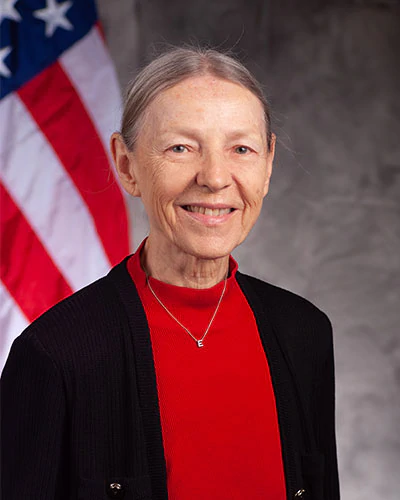Alliance Discussion with Dr. Elaine Larson: An Update on the AMR Crisis and Solutions to Address It

Considered one of the top global health threats facing humanity by the World Health Organization, antimicrobial resistance (AMR) is on the rise. In the United States alone, AMR is implicated in nearly 3 million infections and tens of thousands of deaths each year. Dr. Elaine Larson, Anna C. Maxwell Professor Emerita and Special Lecturer, School of Nursing; Professor of Epidemiology Emerita, Mailman School of Public Health, Columbia University; and Senior Scholar in Residence, New York Academy of Medicine, joined us for an alliance discussion to provide new details about the AMR threat and how we can chart a path to ensure antibiotics remain part of our disease arsenal. Here are some of her thoughts on:
The AMR crisis in numbers:
“In the U.S. each year, more than 2.8 million antimicrobial resistant infections occur in hospital patients, and more than 35,000 people die as a result. Let me just say that the health care costs for AMR estimated by CDC is $4.6 billion a year. [My colleagues and I at Columbia] looked at the same organism, a staphylococcus that was either resistant to antibiotics or susceptible to antibiotics and using a database of over a million patient charts we looked at the additional charges. What we found is if the patient acquires the infection in the hospital, there’s an additional almost $19,000 in costs to have a resistant organism than the more susceptible. That’s because of increased costs of antibiotics or treatment. The length of stay average increased by an average of 2.2 days and the death rate increased by 4%. The community acquired staphylococcal infections were even more dramatic. The average extra charge for this resistant infection was $32,000. It added 4.2 days of hospital stay and increased the death rate by about 3%.”
Antibiotics and agriculture:
“Antibiotics and agriculture are also an issue. In 2020, there were more than 20 and 30 million pounds of antibiotics approved for use in food producing animals, many times more than the amount sold to humans who are sick. Many of the antibiotics used in agriculture are the same class as those used to treat human infections. A modeling study showed the antibiotic consumption in animals in 2010 and, based on the same rate of growth, that predicted antibiotic use in 2030. China has the most antibiotic use in the world in agriculture and the U.S. is second.”
Developing the global arsenal of antibiotics:
“The arsenal of antibiotics peaked in 2000 and is still declining. In the ‘80s, there was a lot of activity in new drug applications for antibacterials. By 2012, it had been reduced to almost zero and as of 2020, 23 antibiotics were in development, 15 in phase I clinical trials, 13 and phase II, 13 in phase III, two have had new drug applications submitted, and, historically, about 60% of drugs that enter phase III will ultimately be approved. So, you can see that the antibiotic pipeline has slowed down considerably since the ‘80s. As a result, the development of new antibiotics will not solve this problem [AMR] alone. We used to think for years, ‘Oh, well, this bug has become resistant to antibiotics, we’ll just use a new antibiotic,’ but that isn’t possible anymore. There are new infections out there that are non-treatable by any known antibiotic, particularly internationally. No new classes of antibiotics have been discovered since the 1980s. The antibiotics that are now coming to market in the past three decades are variations of the drugs that have already been previously discovered. Discovering and developing new antibiotics is challenging because research and development is tricky; it’s time consuming, it’s very expensive, and it often fails. So generally, it takes, right now, 10 to 15 years and over a billion dollars to develop a new antibiotic.”
Solutions for the AMR crisis:
“Clearly political will, ownership by the whole stakeholder chain, including the public, health care systems, and the government – specific to context because we see that things change by state; [solutions] need to be evidence-based, take into consideration country capacity (resources), and understand how to change and impact people’s behavior, [be] cost-effective strategies, and span the One Health spectrum to include the health care community, agriculture, and the public.”
Calls to action:
“We’re all scared about flu, we’re all scared about COVID, and yet AMR is the hidden epidemic. I would say the public campaigns to help the public be aware of this issue haven’t been very effective. That’s not a research issue, it’s a marketing issue. I think we need more marketing expertise about how to make sure that the public understands there’s an issue and things they can do without taking antibiotics for viral infections. I think the second thing is that we need a better understanding about some of the social sciences that can motivate clinicians to change their behavior in terms of prescribing antibiotics. We know in our heads that we shouldn’t, but when patients come, we do it anyway, especially if it’s expeditious. When I asked the PACCARB (Presidential Advisory Council on Combating Antibiotic-Resistance Bacteria) Chair and staff person, what their top priority was, they said, ‘Funding, funding, funding.’ That isn’t particularly helpful because NIH is already doing more, but I think industry can play a really important role in helping to lead efforts for antimicrobial appropriate stewardship. So, I would say funding, particularly by not just government, but by other NGOs and by industry.”
View her slides and watch the full discussion here.




